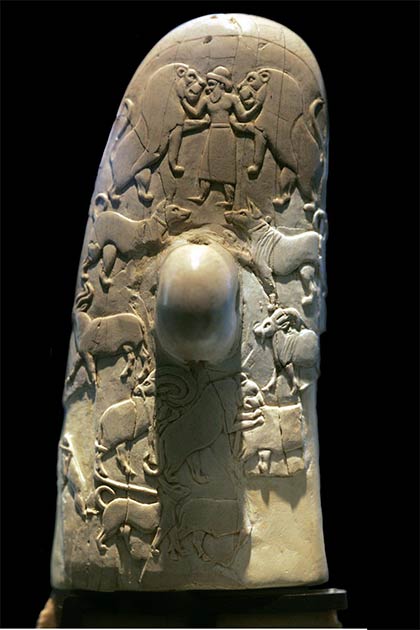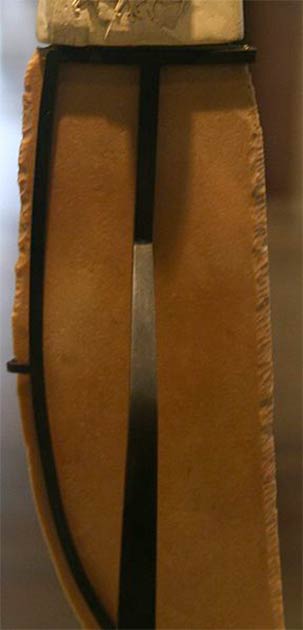5,450 years old Egyptian knife known as Gebel el-Arak, made with an Ivory handle
This unique dagger from the late predynastic period consists of a light silex blade, sculpted using a highly sophisticated technique, and an ivory handle featuring carved bas-relief scenes. It is one of the oldest known examples of bas-relief sculpture.
The themes come from Nilotic as well as Mesopotamian traditions: animals, the hunt, lions overwhelmed by a figure, boats, and human combats.
A luxury object
Everything in this weapon illustrates luxury and technical expertise. The blade, made of extremely high-quality, light ocher slate, reflects an accomplished mastery of stone-cutting techniques. Parallel strips were removed on one side to form a regular pattern.
The other side of the blade is simply polished. Small areas were reworked to form a sharp serrated edge. Egyptian craftsmen used this meticulous technique for a short period only, between 3500 and 3200 BC.
This is the most accomplished example of the silex tool-making technique. Analyses of the handle determined that it is made of a hippopotamus tooth.
Only a small number of ivory dagger handles of this type, decorated with relief carving, exist. These were exceptional works, reserved to an elite.

Men and animals


The blade is set into a carved hippopotamus tooth and has a central knob with a hole for attaching a cord. On one side is a bearded figure wearing a cap, standing between and subduing two lions. Below are two domesticated dogs and wild animals; a hunter seems to be catching an antelope.

The other side depicts combats arranged in several registers. At the top are quasi-nude men wearing penis sheaths, in hand-to-hand combat. At the bottom, dead bodies are strewn between two different types of boats, both in use in Egypt during the Naqada period.
A key work
Animal life, hunting, and boating on the Nile are ancient themes that had already appeared on ceramics and paintings during the Naqada Period.
The bas-relief carving that appeared at this time on large contemporaneous palettes depicted more dynamic and less static scenes than images on earlier traditional ceramic pieces.
Furthermore, the battle theme appeared toward the end of this period, which is why researchers have tried to find a narrative link to historical events.
Today they are interpreted more as referential images, a catalogue of themes that were important to the ruling class during a period when the Egyptian state was taking shape.
As is often the case, certain motifs are variations of those from the contemporaneous Mesopotamian culture, such as the bearded figure of the priest-king (AO5718, AO5719) and the “Master of Animals” figure subduing two beasts. Direct or indirect contacts certainly existed between the two civilizations.
The design of superimposed registers and the conventions used to represent the human figure were used throughout the entire pharaonic period. This object illustrates the shift from the late predynastic period to the birth of the pharaonic civilization.





